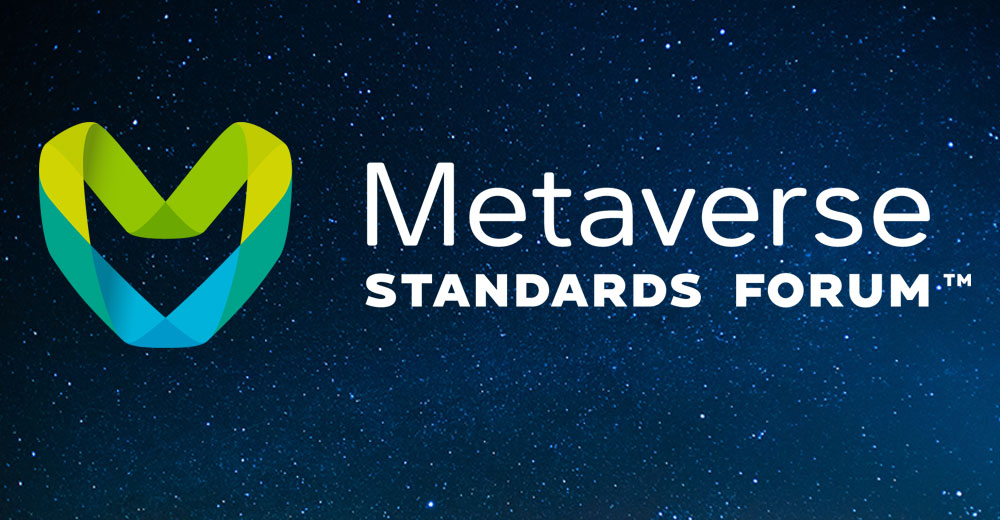For most of us, the metaverse is mostly hype about the promise of a new internet that we could explore virtually. As it’s currently implemented, the metaverse is reminiscent of the networked world pre-internet. It is represented by a bunch of very different and unique attempts to create what seems much like a walled garden approach, more like AOL and CompuServe than the post-Netscape internet that we enjoy today.
The implementations range from useful — like those using Nvidia’s Omniverse — to promises of “something” from Meta (formerly known as Facebook) that, at least now, mostly disappoint. Granted, that disappointment is likely due to overset expectations than any slacking off by Meta. This is often a problem with new technologies where expectations are overset, and then people are underwhelmed by the result.
Now, with last week’s announcement of the Metaverse Standards Forum, it looks like the industry is stepping up to one of the major problems with the metaverse, which is the lack of interoperability and internet-like standards that could allow for a much more seamless future metaverse.
Let’s talk about how important this movement is this week. Then we’ll close with my product of the week, a mobile solar solution that could help avoid the ecological and power outage problems that states like California and Texas are expected to experience as climate change makes their electric grids less reliable.
The Current Metaverse
At present, the metaverse isn’t a thing so much as it is a lot of things.
The most advanced version of the metaverse today is Nvidia’s Omniverse. This tool is used for designing buildings and training autonomous robots (including autonomous cars), and forms the foundation of Earth-2, which is designed to better simulate and predict weather — both to provide earlier notification of major weather events and design potential remedies for global climate change.
While many seem to think the metaverse will grow to replace the internet, I’m doubtful that this can or will happen. The internet organizes information relatively efficiently. Moving to a VR interface from a test interface might slow down the data access process with no offsetting advantage.
The metaverse is best for simulation, emulation, and specifically for tasks where using a virtual environment and machine speeds could solve critical problems more quickly and accurately than existing alternatives. For those tasks, it is already proving itself valuable. While it will likely evolve into something more like the Holodeck in “Star Trek” or the virtual world portrayed in the movie “The Matrix,” it isn’t there yet.
What’s Still Needed
What we can do now is create photorealistic images that can be explored virtually. But what we can’t do is create realistic digital twins of humans to populate the metaverse. We can’t yet instrument the human body so that you could experience the metaverse as if it was real, and our primary interface, VR glasses, are large and heavy and make the 3D glasses the market had rejected earlier look a lot better in contrast.
These problems aren’t cheap or easy to fix. If they had to be uniquely solved for each of the metaverse instances, the evolution of the metaverse and our experiences in it would be set back years, if not decades.
What is needed is the level of cooperation and collaboration that created the internet to now focus on creating the metaverse, and that is exactly what may have happened last week.
Acclaimed Founding Members
The formation of the Metaverse Standards Forum directly addresses this interoperability and standards problem.
Both Meta and Nvidia are on this forum, which consists of a Who’s Who of tech companies — except for Apple, a firm that generally wants to go it alone. Heavy hitters like Microsoft, Adobe, Alibaba, Huawei, Qualcomm, and Sony are participating, along with Epic Games (the metaverse promises a future where you could game in the digital twin of your home, school, or office).
Existing standards groups, including the Spatial Web Foundation, Web3D Consortium, and World Wide Web Consortium, have all joined, as well.
Hosted by Khronos Group, membership to the MSF is free and open to any organization, so watch for companies from numerous industries to enlist. Forum meetings are expected to start next month.
This effort should significantly increase the speed of advancement for the metaverse and make it far more useful for more things, going well beyond what Nvidia is successfully using it for today and reaching a future where we can use it for everything from entertainment and gaming to creating our digital twins and the potential for digital immortality.
Wrapping Up: The Metaverse Grows Up
I expect the formation of the Metaverse Standards Forum to massively accelerate the evolution of the metaverse and move it toward a common concept that could interoperate across providers.
While I don’t believe it will ever replace the internet, I do think it could evolve into an experience that, over time, we could largely live and play in for much of our lives, potentially enriching those lives significantly.
I imagine virtual vacations, more engaging remote meetings, and video games that are more realistic than ever before, all because of an effort to better collaborate and set standards that will benefit the entire mixed reality market.
The metaverse is coming, and thanks to the Metaverse Standards Forum, it will arrive faster and be better than it could have been.

Sesame Solar Nanogrid
Those of us who live in states where power has become unreliable due to global warming and poorly planned electrical grids are expected to have some serious problems when it comes to extreme weather.
Companies and institutions have generator backups, but there are increasing gas and diesel shortages. So, not only are these generators likely to be unreliable when used for extended periods, they are anything but green and will exacerbate the climate change problem they’re supposed to mitigate.
Sesame Solar has an institutional solution for this problem, a large solar-generating trailer that also has a hydrogen fuel cell to generate power at night or on overcast days.
The trailer can also process and filter local water, which could relieve residents from weather or crisis-related water shortages.
Sesame Solar appears to do a far better job of mitigating power outages without producing greenhouse gases which would exacerbate the problem. As a result, the Sesame Solar Nanogrid is my product of the week.



























































